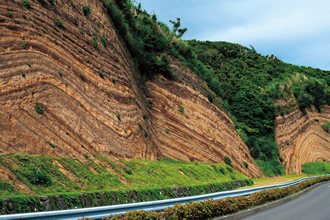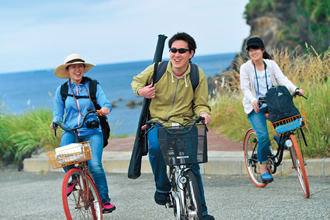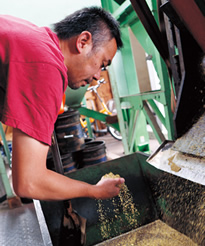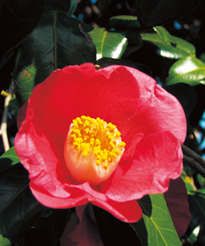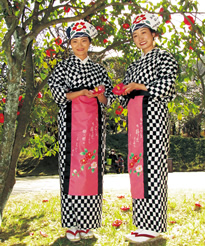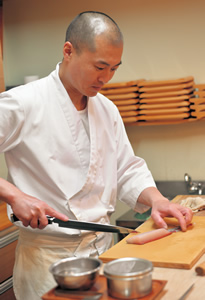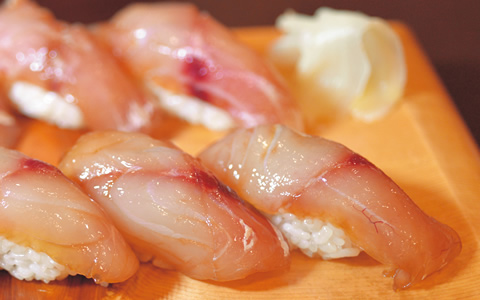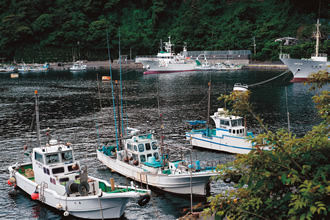niponica is a web magazine that introduces modern Japan to people all over the world.
2017 No.22
 Strolling Japan
Strolling Japan
Layers of lava were exposed when the road around the island was cut through this area, leaving steep cliffs. The layers were formed by a series of volcanic eruptions that started about 1.5 million years ago. The most interesting visible formation is more than 600 meters long.
To appreciate the charms of the island even more, how about cycling around it? Close to the southern tip is a beach of black volcanic sand, sheer cliffs showing layers of lava, and other features formed through volcanic activity. Here too you will see proof that you are standing on a volcanic island.
Bicycle road races have been held for a few years now, attracting racers from Japan and abroad. A growing number of them are ace cyclists with their own bicycles, eager to test their muscles on the circumferential road with vertical differentials of more than 400 meters. If you want a more leisurely ride along the coast on a rental bike, pedaling on a bike path is enjoyable as well. After working up a sweat, various lodgings and the municipally operated hot spring await you.
One type of tree that you’ll see everywhere on the island is camellia japonica. Camellia groves once played an important role in the lives of the islanders, protecting them from the wind and providing oil extracted from its seeds. Records from the Tenpo era (1830-1844) in the Edo period list camellia oil as a special product of the island. Today about three million camellia trees are said to grow in their natural state on Oshima. When the flowers bloom in winter their red petals color the land. Camellia oil contains more healthful oleic acid than olive oil, and this has created something of a revival in interest over the last few years. Two common uses for the oil are for deep-frying tempura and as a dressing for angelica herb salad.
And then, of course, there are the various types of fresh seafood brought by the Kuroshio Current to grace the table in their own season. Sashimi flavored with soy sauce steeped in spicy shima togarashi red peppers is a traditional delicacy of the Izu Islands.
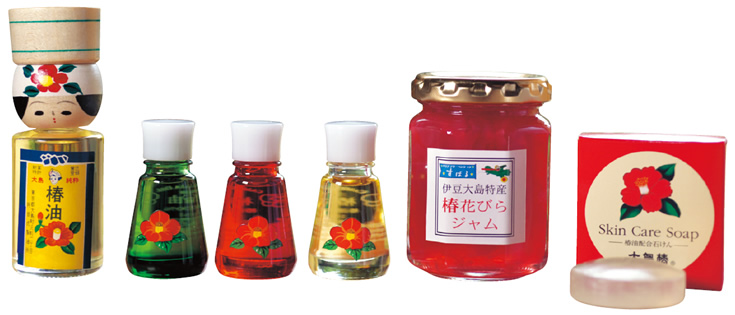
Locally made camellia-based products, including the bottled oil, camellia flower jam and soap shown here, are popular as souvenirs.
Bekko-zushi is a sushi made with fish in season that is flavored in shima togarashi (hot red pepper) soy sauce. The soy sauce recipe is handed down from shop to shop and family to family in secret. “Today’s catch was Japanese butterfish. We’re using fresh ones just off the boat, so we don’t steep them long in soy sauce,” says the owner of the Minato Zushi restaurant.
From around the mid-1920s to the mid-1960s, Habu Port was crowded with tourists and fishing boat crews. Today, the history of those days can be felt quite keenly by travelers.
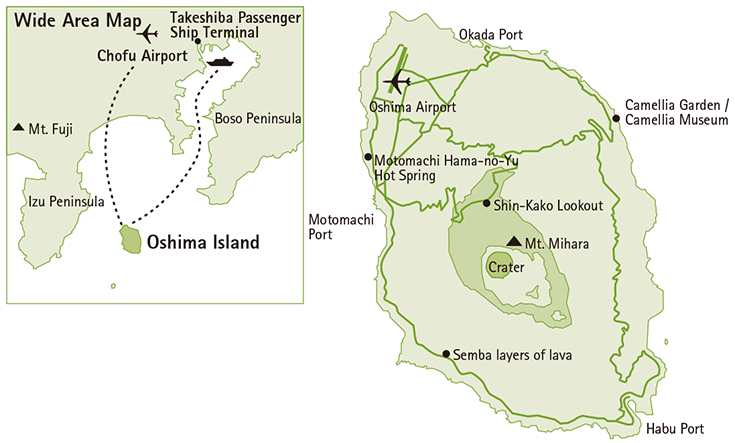
Oshima Island Area Maps
●Access
From Tokyo Station, take a JR Yamanote Line or Keihintohoku Line to Hamamatucho Station. From there, take a Tokai Kisen high-speed ferry. It takes about 1 hour and 45 minutes to Motomachi Port or Okada Port.
Or, from Tokyo Station, it takes about 1 hour to the Chofu Airport. From there, it takes 25 minutes to the Oshima Airport by plane.
●Information
Oshima Tourism Association
http://www.izu-oshima.or.jp/
Global Nature Club
http://www.global-ds.com/
Takada Oil Factory
http://www.tsubaki-abura.com/








